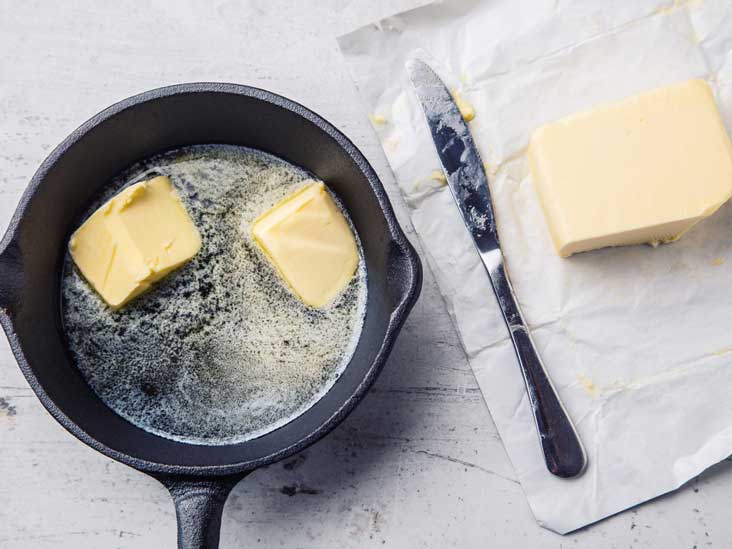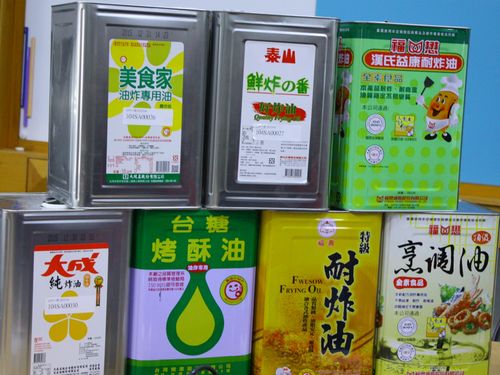41 what are trans fats called on labels
How to Spot Sneaky Forms of Trans Fats on Labels When reading labels, also avoid mono and diglyceride as they are trans-fats in disguise. When you go to the doctor, they may test you for your triglyceride level. They are testing how much fat you have in your bloodstream. Mono, di, and triglycerides are all fats. Almost all fats come in the form of triglycerides. Trans Fats | The Food Label Lies We are Told | Get Lean After 40 Blog Trans Fats Well, believe it or not, most of the foods that show "Zero Trans Fats" on the label actually contain a TON of it. Thanks to the FDA, manufacturers are allowed to label ANY food — even so-called "healthy" ones, with less than 0.5g of trans fat per serving as "Trans Fat-Free."
Trans fat information on food labels: consumer use and interpretation Men and consumers under age 40 were least likely to be aware of food label information. While most consumers (75%) correctly interpreted the "0 trans fat" nutrition claim and thought foods with this claim could be healthy choices (64%), only 51% purchased these foods to reduce trans fat intake.

What are trans fats called on labels
Trans Fats: The Truth in Labeling | Atkins After 2006, when the new labeling laws go into effect, the FDA will still allow manufactucturers to list "zero" under trans fats if there is less than ½ gram per serving of the food. They will also permit manufacturers to say "zero trans fats" on the label if a serving size contains a half gram or less. This is a bad rule that needs changing. Fat - Wikipedia Another 2010 analysis however found only 0.2% of trans fats in margarine and other processed spreads. Up to 45% of the total fat in those foods containing man-made trans fats formed by partially hydrogenating plant fats may be trans fat. Baking shortenings, unless reformulated, contain around 30% trans fats compared to their total fats. High ... Trans Fats | American Heart Association Mar 23, 2017 · Trans fats are easy to use, inexpensive to produce and last a long time. Trans fats give foods a desirable taste and texture. Many restaurants and fast-food outlets use trans fats to deep-fry foods because oils with trans fats can be used many times in commercial fryers.
What are trans fats called on labels. 7 Foods That Still Contain Trans Fats - Healthline Feb 08, 2022 · It’s a good idea to check labels carefully for trans fats in foods manufactured before the FDA ban took effect, including potato chips, frozen pizza, canned frosting, and crackers. The bottom line PDF Trans Fats on the Nutrition Facts Label - Salem County Trans Fats on the Nutrition Facts Label U.S. Department of Agriculture What is trans fat? Trans fat, also called trans fatty acids (TFA), is formed when hydrogen is added to a vegetable oil to make a more solid fat like shortening or margarine. This process is called hydrogenation, and it is used to increase the shelf life and maintain the ... Understanding the FDA's Trans Fat Label Requirements Naturally occurring trans fat is made in the gut of some animals, resulting in a small amount of trans fat in dairy and meat products. Artificial trans fats are a type of fat that is made in a laboratory through a processes called partial hydrogenation. Hydrogen is added to oils to make them more solid. Why are trans fats in food? Types of fat: The good and the bad - Medical News Today Mar 16, 2020 · Saturated and trans fats can raise cholesterol levels and increase disease risk. ... Saturated fats are solid at room temperature and are sometimes called solid fats. The basic carbon structure of ...
How to Read Food Labels for Fats and Oils A Note on Ingredient Lists. Fats and oils can come from many sources, like animal fats, fish, seeds, plants, and nuts. Reading the ingredient lists on products will reveal the source of the fat. For oils and fats ingredient lists, fats and oils are referred to by their common names (e.g., "beef fat," "cottonseed oil"). Consumers beware: Misleading labels may hide trans fats People may be consuming more trans fat than they think, as a result of misleading food labels, according to a study from the New York Department of Health and Mental Hygiene. Researchers examined ... Trans Fat Now On labels - medicinenet.com FDA has required that saturated fat and dietary cholesterol be listed on the food label since 1993. By adding trans fat on the Nutrition Facts panel (required by January 1, 2006), consumers will now know for the first time how much of all three -- saturated fat, trans fat, and cholesterol -- are in the foods they choose. Understanding trans fat on food labels - NBC News As with other nutrients on labels, the presence of trans fat less than 0.5 gram per standard serving is listed as zero. There may be a trace amount of trans fat in each serving. But the amount of...
Trans Fats | American Heart Association Artificial trans fats (or trans fatty acids) are created in an industrial process that adds hydrogen to liquid vegetable oils to make them more solid. The primary dietary source for trans fats in processed food is "partially hydrogenated oils." Look for them on the ingredient list on food packages. Food Labels to Include Trans Fat Content - WebMD When a Good Fat Goes Bad Trans fatty acids are the result of a process called hydrogenation that converts a relatively healthy, unsaturated liquid fat, such as vegetable oil, into a solid one, to... Trans fat is double trouble for heart health - Mayo Clinic Feb 23, 2022 · Unlike other dietary fats, trans fats — also called trans-fatty acids — raise "bad" cholesterol and also lowers "good" cholesterol. ... Reading food labels. In the United States if a food has less than 0.5 grams of trans fats in a serving, the food label can read 0 … Small Entity Compliance Guide: Trans Fatty Acids in Nutrition Labeling ... Trans fatty acids should be listed as " Trans fat" or " Trans " on a separate line under the listing of saturated fat in the nutrition label. Trans fat content must be expressed as grams per...
What Are Trans Fats, and Are They Bad for You? - Healthline Jul 30, 2019 · Trans fats are believed to damage the inner lining of your blood vessels, known as the endothelium. In a 4-week study in which trans fats replaced saturated fats, HDL (good) cholesterol dropped 21 ...
Trans Fats, Health and Nutritional Labeling of Foods Since 2006, food manufacturers have been required to include trans fat content information on the Nutrition Facts label on the packages. Currently, food manufacturers are allowed to make "trans free" or "no trans" claims if the amount of trans fat in the product is less than 0.5 g trans fat per serving.
What Are Trans Fats, and Are They Bad for You? - Healthline Trans fats, or trans-fatty acids, are a form of unsaturated fat. They come in both natural and artificial forms. Natural, or ruminant, trans fats occur in the meat and dairy from ruminant animals,...
Dietary fat: Know which to choose - Mayo Clinic Apr 08, 2021 · Trans fat occurs naturally in small amounts in red meat and dairy products. Trans fat can also be manufactured by adding hydrogen to vegetable oil. This artificial form of trans fat is known as partially hydrogenated oil. It has unhealthy effects on cholesterol levels and increases the risk of heart attack and stroke.
Trans Fats: The Truth in Labeling - Atkins They will also permit manufacturers to say "zero trans fats" on the label if a serving size contains a half gram or less. This is a bad rule that needs changing. With small and unrealistic "serving sizes" on the nutrition facts label, each of which contains just under ½ a gram, you could easily wind up consuming a gram or two in a typical portion.
Trans Fats: The Truth in Labeling | Atkins After 2006, when the new labeling laws go into effect, the FDA will still allow manufactucturers to list "zero" under trans fats if there is less than ½ gram per serving of the food. They will also permit manufacturers to say "zero trans fats" on the label if a serving size contains a half gram or less. This is a bad rule that needs changing.
Weight Loss & Diet Plans - Find healthy diet plans and helpful ... - WebMD But that bag of potato or corn chips is full of salt and, often, unhealthy saturated or trans fats. These can raise your odds of heart disease. Nuts like …
Know Your Nutrition Label, Part 1: Trans Fats and PHOs Also, the food industry began to use the term "hydrogenated" instead of labeling the word trans fat. If you recall, partially hydrogentated fat is trans fat. There is good news to report on the fight on trans fats. On June 16, 2015, the FDA annouced that artificial trans fats would be banned within three years.
Trans Fat Labels Lie To You, And The FDA Lets It Happen And sometimes, sadly, not even the label on the package is being entirely honest with you. A new study has found that nutritional labels often lie about trans fat levels in a pretty sneaky fashion ...
Trans fat - Wikipedia Trans fat, also called trans-unsaturated fatty acids, or trans fatty acids, is a type of unsaturated fat that naturally occurs in small amounts in meat and milk fat. It became widely produced as an unintentional byproduct in the industrial processing of vegetable and fish oils in the early 20th century for use in margarine and later also in snack food, packaged baked goods, and for …
Truth in Labeling: Trans Fats - The Dr. Oz Show Specifically, I found out that if there is less than 0.5 grams of trans fat per serving, the food company could label it as having 0 grams of trans fat per serving. This means that there could be up to 0.49 grams in one serving of food and it can say 0 grams on the label. Knowing this, one can easily see how a few servings could cause you to ...
Trans Fat on Food Labels: Now You See It, Now You Don't Explanation Barbara Schneeman, director of the FDAs Office of Nutritional Products, Labeling and Dietary Supplements, says the reason the FDA is allowing foods containing less than 0.5 g of trans fats to be rounded down to 0 is that current detection methods for trans fats are not very reliable for amounts less than 0.5 g.

Trans Fat Is Hiding In Your Food Despite '0 Trans Fat' Labeling: Stick To Real Food For Your ...
Dietary fats explained: MedlinePlus Medical Encyclopedia Jul 13, 2020 · Trans fatty acids are unhealthy fats that form when vegetable oil goes through a process called hydrogenation. This leads the fat to harden and become solid at room temperature. Hydrogenated fats, or "trans fats," are often used to keep some foods fresh for a long time. Trans fats are also used for cooking in some restaurants.
Trans Fat on Food Labels: Now You See It, Now You Don't That's because newly implemented U.S. Food and Drug Administration rules on labeling allow foods with less than 0.5 grams of trans fats per serving to claim "zero" grams of trans fats on their labels. Under these guidelines, which went into effect on Jan. 1, a food with 0.4 grams of trans fats can be listed as having zero trans fats.
Always Check Food Labels For This If You're Avoiding Trans Fat One of trans fat's most common aliases is hydrogenated oil, a fairly popular ingredient that is in everything from coffee creamer to microwave popcorn, per the Mayo Clinic. Hydrogenated oil, whose main use is to keep food fresher longer, simply refers to any food that is a solid fat at room temperature, per Medical News Today.
Easy Way to Tell if Food Has Trans Fats; Don't Trust Labels What is the current food label law regarding trans fats? A trans fat content of more than five grams can be listed in one-gram increments. Under five grams can be listed in one-half gram increments. Lower than one-half gram can be listed as zero grams of trans fats!










Post a Comment for "41 what are trans fats called on labels"